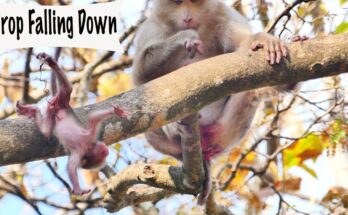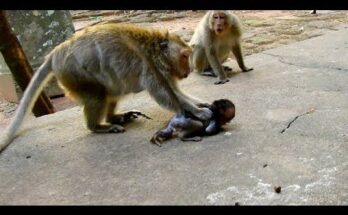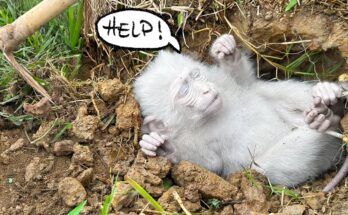When a monkey is giving birth, a remarkable and complex natural process is unfolding. Just like in humans and other mammals, labor and delivery in monkeys involve a series of physical and hormonal changes that prepare the mother’s body for the arrival of her baby. The birthing process varies slightly between different monkey species, but the overall biological sequence remains quite similar.
As labor begins, the mother monkey will often seek a safe and quiet location, usually in a tree or a secluded spot, away from potential predators and disturbances. This behavior is driven by a natural instinct to protect both herself and the newborn during this vulnerable time. Her body starts releasing oxytocin, a hormone that stimulates uterine contractions. These contractions help push the baby through the birth canal.
During active labor, the mother may show signs of discomfort such as restlessness, frequent movement, or vocalizations. Some species, like macaques and baboons, may be observed squatting or holding onto branches for support. The duration of labor can vary, but it is typically shorter in monkeys compared to humans. The actual birth is usually quick, with the baby emerging headfirst in most cases.
Once the baby is born, the mother immediately begins to clean it by licking and grooming. This serves multiple purposes: it removes birth fluids, stimulates the infant’s breathing, and strengthens the bond between mother and baby. Monkeys are known for their strong maternal instincts, and the newborn will typically cling to the mother’s belly or chest almost immediately after birth.
The umbilical cord is often bitten off by the mother shortly after delivery. In some monkey species, other females in the group, such as sisters or experienced mothers, may offer support during or after the birth, a behavior known as alloparenting. However, many monkeys give birth in solitude.
The early moments after birth are crucial for survival. The baby monkey relies entirely on its mother for warmth, nourishment, and protection. Nursing usually begins soon after birth, and the infant will remain physically attached to the mother for weeks or even months, depending on the species.
In summary, when a monkey gives birth, it’s a powerful combination of instinct, biology, and maternal care. The process, though often unseen in the wild, reflects the deep and universal bond between mother and offspring across the animal kingdom.



